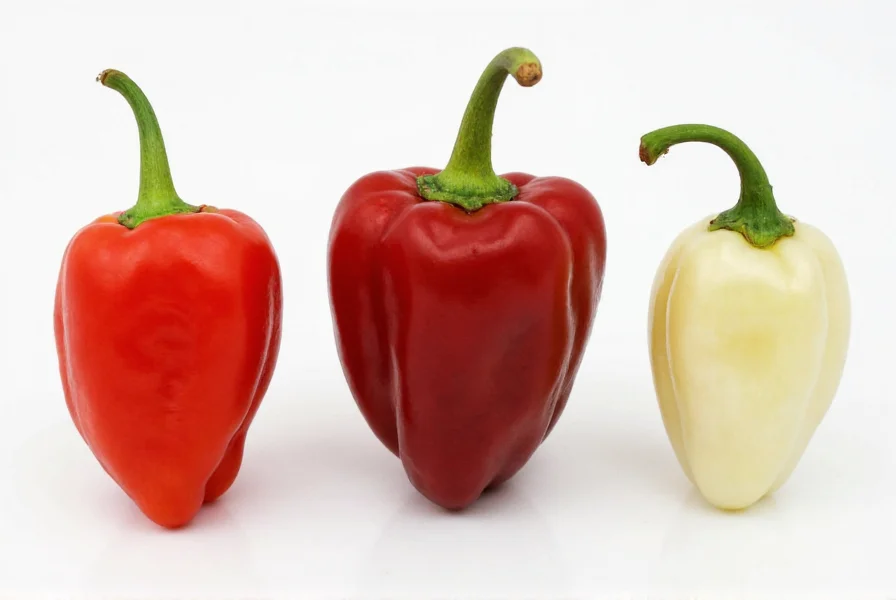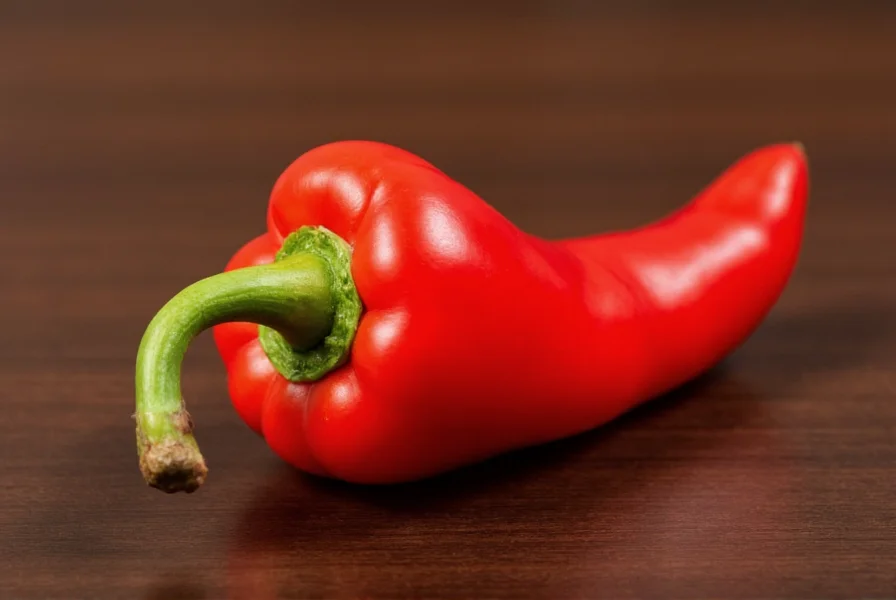The current hottest pepper in the world is Pepper X, officially certified by Guinness World Records in 2023 with a staggering 2.69 million Scoville Heat Units (SHU). Developed by Ed Currie of the PuckerButt Pepper Company, this super-hot pepper surpasses its predecessor, the Carolina Reaper, by nearly 600,000 SHU. Scientific testing at Winthrop University confirmed its heat level through high-performance liquid chromatography, the industry standard for accurate capsaicin measurement.
For chili enthusiasts tracking the evolution of super-hot peppers, understanding the new record holder requires examining both scientific verification and practical implications. Pepper X represents not just a heat milestone but a significant advancement in selective pepper breeding techniques that have pushed capsaicin production to unprecedented levels.
The Science Behind Pepper X's Record-Breaking Heat
Pepper X's heat measurement wasn't a one-time fluke but the result of rigorous scientific testing. Researchers at Winthrop University conducted multiple analyses using high-performance liquid chromatography (HPLC), the method preferred by pepper scientists for its precision. The tests revealed an average Scoville rating of 2.69 million SHU, with individual specimens reaching up to 3.18 million SHU under optimal growing conditions.
What makes Pepper X particularly remarkable is its consistent heat profile. Unlike some super-hots that show dramatic variation between plants, Pepper X maintains extreme heat levels across different growing environments. This consistency stems from Ed Currie's meticulous breeding program that spanned over ten years, crossing various Bhut Jolokia (ghost pepper) variants with other ultra-hot species.

Pepper X vs. Previous Heat Champions: A Comparative Analysis
Understanding Pepper X's significance requires context with previous record holders. The following comparison reveals how super-hot peppers have evolved:
| Pepper Variety | Scoville Heat Units | Year Certified | Heat Relative to Jalapeño |
|---|---|---|---|
| Pepper X | 2,690,000 SHU | 2023 | 107x hotter |
| Carolina Reaper | 2,200,000 SHU | 2013 | 88x hotter |
| Trinidad Moruga Scorpion | 2,000,000 SHU | 2012 | 80x hotter |
| Bhut Jolokia (Ghost Pepper) | 1,000,000 SHU | 2007 | 40x hotter |
| Jalapeño (reference) | 2,500-8,000 SHU | N/A | 1x |
This progression demonstrates how pepper breeding has accelerated heat production. While it took decades to move from ghost peppers to the Scorpion variety, the jump to Carolina Reaper and now Pepper X occurred within a decade, reflecting advances in selective breeding techniques and genetic understanding.
Evolution of the World's Hottest Pepper: Key Milestones
The journey to Pepper X represents decades of selective breeding and scientific verification. Here are the officially recognized milestones in the quest for extreme heat:
- 2007: Bhut Jolokia (Ghost Pepper) certified by Guinness World Records with 1,001,304 Scoville Heat Units [Guinness World Records]
- 2012: Trinidad Moruga Scorpion certified by Guinness World Records with 2,009,231 SHU [Guinness World Records]
- 2013: Carolina Reaper certified by Guinness World Records with 2,200,000 SHU [Guinness World Records]
- 2023: Pepper X certified by Guinness World Records with 2,693,000 SHU [Guinness World Records]
Physical Characteristics and Flavor Profile
Despite its extreme heat, Pepper X offers more than just burn. The peppers typically measure 1.5-2 inches in length with a distinctive pointed tail and deeply wrinkled skin. Their color transitions from green to a vibrant red when fully mature.
Surprisingly, Pepper X delivers a complex flavor profile beneath its intense heat. Tasters describe initial fruity, almost sweet notes reminiscent of tropical fruits before the capsaicin hits. This flavor complexity represents a significant advancement over earlier super-hots that often sacrificed taste for pure heat.

Safety Considerations for Handling Super-Hot Peppers
Working with Pepper X requires serious precautions that go beyond standard kitchen safety. The extreme capsaicin concentration means:
- Gloves are mandatory—nitrile gloves preferred over latex
- Eye protection prevents accidental transfer of capsaicin
- Avoid touching face or other body parts during handling
- Work in well-ventilated areas to prevent inhalation of capsaicin particles
- Have dairy products (milk, yogurt) readily available to counteract burns
Medical professionals warn that consuming pure Pepper X extract can cause severe reactions including temporary loss of sensation, respiratory distress, and in extreme cases, hospitalization. Even experienced chili eaters should approach Pepper X with extreme caution, starting with minuscule amounts diluted in other foods.
The Verification Process: How Pepper X Earned Its Title
Guinness World Records maintains strict protocols for verifying new heat records. For Pepper X, the process involved:
- Submission of multiple pepper samples from different harvests
- Testing by an independent, accredited laboratory using HPLC
- Documentation of the breeding history and cultivation methods
- Verification of consistent heat levels across multiple specimens
- Review by Guinness's scientific advisory board
This rigorous process distinguishes officially recognized record holders from unofficial claims. Several other peppers have made heat claims, but without proper verification through standardized testing protocols, these remain anecdotal rather than scientifically validated.
Future of Super-Hot Peppers: What Comes After Pepper X?
With Pepper X setting a new benchmark, the question naturally arises: what's next in the world of super-hot peppers? Current breeding programs focus on several directions:
- Developing peppers with even higher capsaicin concentrations through advanced cross-breeding
- Creating more stable heat profiles that maintain intensity across different growing conditions
- Improving flavor complexity while maintaining extreme heat
- Exploring medical applications of ultra-concentrated capsaicin
However, some experts question whether there's a biological limit to capsaicin production in peppers. The plant's own defense mechanisms may prevent significantly higher concentrations, suggesting Pepper X could represent near the upper limit of naturally occurring capsaicin levels.
Practical Applications of Extreme Heat Peppers
Beyond novelty consumption, super-hot peppers like Pepper X serve important practical purposes:
- Medical research into pain management using capsaicin derivatives
- Natural pest deterrents in organic farming
- Active ingredients in self-defense sprays
- Specialized food industry applications for extreme heat enthusiasts
Researchers continue exploring how these extreme peppers might contribute to pharmaceutical developments, particularly in pain management where capsaicin shows promise for treating certain chronic pain conditions.
Contextual Boundaries: Appropriate Use Cases and Limitations
Pepper X's extreme properties create distinct boundaries for safe and effective utilization. Understanding these constraints is critical for responsible application:
- Medical Research Applications: While capsaicin from Pepper X shows therapeutic potential, the National Institutes of Health emphasizes that clinical use requires purified extracts under controlled conditions. Home preparation of capsaicin remedies is strongly discouraged due to inconsistent potency and safety risks [NIH National Library of Medicine].
- Culinary Use Restrictions: The U.S. Food and Drug Administration warns that super-hot peppers like Pepper X are not suitable for standard recipes. The National Center for Home Food Preservation explicitly prohibits their use in home canning due to unpredictable heat concentration that may compromise food safety [NCHFP].
- Agricultural Cultivation Limits: Successful Pepper X cultivation requires geographic isolation (minimum 500 feet) from other pepper varieties to prevent cross-pollination, as documented by agricultural extension services. It also demands specific climate conditions (90-100°F daytime temperatures) that limit commercial production to select regions [Penn State Extension].
- Industrial Safety Requirements: OSHA classifies capsaicin as a hazardous substance requiring specialized handling protocols. Commercial processors must implement engineering controls and personal protective equipment meeting OSHA standards to prevent respiratory and dermal exposure [OSHA Chemical Sampling Information].
Frequently Asked Questions
How much hotter is Pepper X compared to a jalapeño?
Pepper X measures approximately 2.69 million Scoville Heat Units (SHU), making it about 107 times hotter than a typical jalapeño pepper, which ranges from 2,500-8,000 SHU. This means you would need to eat over one hundred jalapeños to match the heat of just one Pepper X.
Can you grow Pepper X peppers at home?
Yes, Pepper X can be grown at home, but it requires specific conditions: 100-120 days to maturity, consistent temperatures between 75-90°F, well-draining soil, and careful handling due to extreme heat. Gardeners should wear gloves when handling plants and avoid cross-pollination with milder pepper varieties. The seeds are difficult to germinate and require bottom heat for best results.
What should I do if I accidentally eat too much Pepper X?
If you consume too much Pepper X, immediately drink full-fat dairy products like milk or eat yogurt, as capsaicin is fat-soluble. Avoid water, which spreads the burn. For severe reactions including difficulty breathing, swelling, or persistent pain, seek medical attention immediately. Never induce vomiting, as this can cause additional damage to your esophagus.
Is Pepper X genetically modified?
No, Pepper X is not genetically modified. It was developed through traditional selective breeding techniques over ten years by Ed Currie of PuckerButt Pepper Company. The breeding process involved crossing various Bhut Jolokia (ghost pepper) variants with other ultra-hot pepper species to gradually increase capsaicin production while maintaining plant viability.
How long does the burn from Pepper X last?
The intense burn from Pepper X typically peaks within 2-5 minutes and can last 30-45 minutes for most people. However, residual effects including numbness and sensitivity may persist for several hours. The duration varies based on individual tolerance, the amount consumed, and whether dairy products were used to counteract the burn. In extreme cases, effects can linger for up to 24 hours.











 浙公网安备
33010002000092号
浙公网安备
33010002000092号 浙B2-20120091-4
浙B2-20120091-4